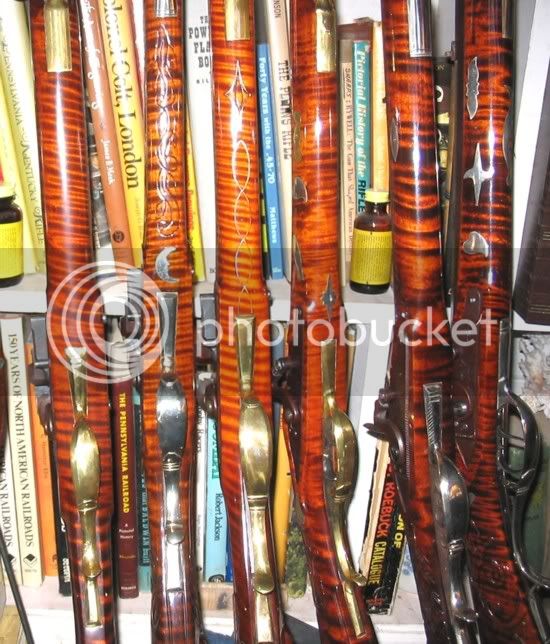adjmclar15
Pilgrim
- Joined
- Oct 2, 2014
- Messages
- 4
- Reaction score
- 0
I have just purchased a Traditions Kentucky Rifle kit as my first attempt to build / put a muzzleloader together.
I have a couple questions though:
Browning the Barrel: I can get Plum Brown locally and I'm open to suggestions on how to heat the barrel. I've measured my oven and the barrel is about 2 inches to long to be able to close the door on the oven. Would I be better off using the laurel mountain forge barrel brown.
Birchwood Casey Colonial Brown: I'm having trouble locating this product but it might have been renamed to "maple". My local shop has a couple bottles. Has anyone used it and can give me an idea about what color the finished stock would take. I plan to use the Tru Oil after completing the initial staining. Any guidance?
When assembling this kit, is there anything I need to know that the instructions might not cover?
Thanks guys / gals
I have a couple questions though:
Browning the Barrel: I can get Plum Brown locally and I'm open to suggestions on how to heat the barrel. I've measured my oven and the barrel is about 2 inches to long to be able to close the door on the oven. Would I be better off using the laurel mountain forge barrel brown.
Birchwood Casey Colonial Brown: I'm having trouble locating this product but it might have been renamed to "maple". My local shop has a couple bottles. Has anyone used it and can give me an idea about what color the finished stock would take. I plan to use the Tru Oil after completing the initial staining. Any guidance?
When assembling this kit, is there anything I need to know that the instructions might not cover?
Thanks guys / gals






